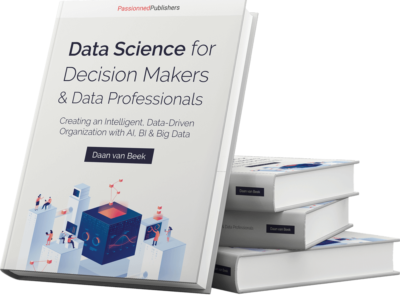Take back control of your work
Data-driven improvement cycles help you make the right moves quickly and reliably, fostering continuous improvement through data. But why should people want to do this? Where do they get the intrinsic motivation to want to embrace data-driven working? Why should people want to take charge and be in control? The answer is simple: because data-driven working has a huge number of benefits. Additionally, it respects human autonomy. By leveraging data, organizations can make more informed decisions, drive innovation, and ultimately achieve better outcomes. Embracing this approach not only enhances efficiency but also empowers employees to take ownership of their work, leading to a more engaged and productive workforce. This blog will cover the six most important benefits of data-driven working.
1. Faster feedback and more accurate communication
People are essentially one big feedback system that avoids pain and seeks out pleasure. We constantly get feedback from our senses. If we hold our hand over an unseen fire, we’ll reflexively pull it back. If there’s too much light, we avert our gaze or put on sunglasses. We don’t just see the results of our actions; our entire being is a result of our actions.
 If you compare our human reflexes and our approach to feedback with the organizational world, most organizations and their managers can be considered largely senseless: they act without using their senses, which in turn can make their actions illogical. They usually don’t know what goes on in the workplace, and they don’t know the facts. By looking at the data, however, they could be made aware of these facts. Genuine feedback about what really works or what’s most essential is lacking, despite the fact that research has shown that feedback is the number 1 success factor in intelligent organizations.
If you compare our human reflexes and our approach to feedback with the organizational world, most organizations and their managers can be considered largely senseless: they act without using their senses, which in turn can make their actions illogical. They usually don’t know what goes on in the workplace, and they don’t know the facts. By looking at the data, however, they could be made aware of these facts. Genuine feedback about what really works or what’s most essential is lacking, despite the fact that research has shown that feedback is the number 1 success factor in intelligent organizations.
Organizations that perform well have designed their business and processes so that they continuously receive feedback. Based on that feedback, they can immediately course-correct and adapt. That’s worlds apart from having performance reviews once a year. Essentially, it’s about analyzing data that tells you, every ten minutes, what can be done better or differently, and where there’s profit to be gained.
The Business Intelligence book  The advantages of data-driven working and more are all laid out in the BI & AI book Data Science for Decision-Makers. This business intelligence book covers the most important basic principles, organizational processes, architectures, tools, and conditions needed to create a truly Intelligent Organization using data-driven working. Make better decisions, faster, on all levels of your organization.
The advantages of data-driven working and more are all laid out in the BI & AI book Data Science for Decision-Makers. This business intelligence book covers the most important basic principles, organizational processes, architectures, tools, and conditions needed to create a truly Intelligent Organization using data-driven working. Make better decisions, faster, on all levels of your organization.
2. Return power to the craft
Oftentimes, managers decide what the next policy or task should be. But what do they base that decision on? Is it based on data from feedback, or because it seems like a good idea to them, unfounded and untested? This is the next point: lousy leadership. Relevant questions: is the department manager available? Do they know what’s happening? Do they have their finger on the pulse? Are they course-correcting? And if they do, is it based on facts or gut feelings?
Many leaders are more concerned with getting their next certificate or accreditation than improving everyday output. Managers are often trapped in a bubble. They use a one-size-fits-all approach when justifying their decisions, which means they’re not focused on smart steering. They’re writing procedures, they have their annual performance reviews. But they don’t get a realistic or validated picture of what’s happening in the workplace, and how the organization’s everyday processes can be improved.
The availability of data returns the power to the craftspeople, as it should be. Returning power to the craft doesn’t just mean giving people a voice, but also giving them the (BI) tools they can use to get reliable feedback about where they are, and what the results of a particular action were. Data-driven working isn’t just about gauges on a dashboard, but also the tools that the craftspeople can use to achieve real improvement.
3. Flatter, more democratic organizations
 The data used by data-driven organizations is usually measurable in the primary process. Nine times out of ten, the data comes from the bottom. The data reflects the impact of an intervention on the whole.
The data used by data-driven organizations is usually measurable in the primary process. Nine times out of ten, the data comes from the bottom. The data reflects the impact of an intervention on the whole.
Take ProRail, which is currently experimenting with data in an effort to combat train delays. The company is sitting on mountains of interesting data that can be used to better serve travelers. Through the intelligent use of new technologies, like sensors, the organization sees plenty of opportunities to solve concrete and practical problems. ProRail has managed to increase the availability of the railway network by using data-driven measures to prevent outages. They’ve gotten much better at predicting people walking on the tracks and causing delays by combining data from various sources.
Data-driven working isn’t based on a hierarchy; it doesn’t work along the chain of command
Data-driven working counter-balances many organizations that primarily work with corrective mechanisms designed at the top and applied after the fact. But data-driven working isn’t based on a hierarchy; it doesn’t work along the chain of command. It works by revealing relevant data and making it available to the people doing the work. Instead of a chain of command, it’s more about a dashboard of data. Within this concept, there’s no place for managers with egos or those who put ambition above the quality of work.
By returning the power to the craft (see number 2) and management information being established through data, you can make do with far fewer layers of management. This results in flatter organizations. Continuous learning and improvement can only take place when you clearly know where you are and you’re not distracted by things that don’t matter. The world is full of such things, which is why it’s important to focus on that when implementing data-driven working.
4. Return passion and pleasure to the workplace
 Passion is the starting point of work with purpose. No longer will the decisions from upper management, which can’t be argued with, be the deciding factor. Suddenly, work is about something. You’re empowered to do the things that matter to you. What’s your goal? What do you stand for? When the manager doesn’t set the agenda, but you do, it creates more responsibility, but also greater satisfaction and involvement.
Passion is the starting point of work with purpose. No longer will the decisions from upper management, which can’t be argued with, be the deciding factor. Suddenly, work is about something. You’re empowered to do the things that matter to you. What’s your goal? What do you stand for? When the manager doesn’t set the agenda, but you do, it creates more responsibility, but also greater satisfaction and involvement.
The two biggest causes of burnout are: feeling helpless and feeling useless. Because the results are front and center, the useless feeling disappears, and organizations start doing more useful things. Thanks to the data-driven improvement cycle structuring improvement efforts, helplessness also vanishes, and in many cases, so does the feeling of cynicism regarding the organization’s change potential. This is how implementing data-driven improvement cycles also brings pleasure back to the job. And part of that is because it also exposes the unhelpful, dysfunctional organizational structures.
The SMART KPI Guide 2025 To have the right data, you also need the right KPIs. Many companies have too many indicators, or define the wrong Key Performance Indicators. The SMART KPI Toolbox will help you define those few essential KPIs that really matter to your bottom line and the satisfaction of your customers and employees, using many examples, exercises, and explanations.
To have the right data, you also need the right KPIs. Many companies have too many indicators, or define the wrong Key Performance Indicators. The SMART KPI Toolbox will help you define those few essential KPIs that really matter to your bottom line and the satisfaction of your customers and employees, using many examples, exercises, and explanations.
5. Process thinking takes center stage
 Data-driven working leads to an increasingly optimized working process. It also reveals where there isn’t enough being learned or improved, and where you need to take action. It shows clear evidence of what actions to take to course-correct. The work that you do isn’t just a collection of separate tasks. It’s an integral process that you’re a part of. In this process, you receive input and deliver output to others. Input and output are measurable, and recorded over time.
Data-driven working leads to an increasingly optimized working process. It also reveals where there isn’t enough being learned or improved, and where you need to take action. It shows clear evidence of what actions to take to course-correct. The work that you do isn’t just a collection of separate tasks. It’s an integral process that you’re a part of. In this process, you receive input and deliver output to others. Input and output are measurable, and recorded over time.
All that data leads to meaningful knowledge and information, creating a new perspective on the progress of each aspect of the overall process. All the knowledge and information you’re working with are facts.
Points of improvement, choices, and conclusions are thus also based on facts that are always kept up to date. That creates the possibility of continuous improvement. It’s no longer about opinions, positions, or biased information about an approach that reveals a manager’s hobby horse. Let the data do the talking, and the most streamlined process will be created. Not because anyone has a strong opinion about it, but because the facts all point in the same direction. This leads to further streamlining of the processes.
6. Performance improves by leaps and bounds
Data-driven working leads to clear performance improvement. But you need to ensure that the data feedback loop always considers the perspective of the patient, the client, or the consumer. In short: consider the perspective of the receiver.
When I walk the halls of a government agency, I often find myself thinking: what happened to the citizen’s perspective? Or when I speak to the directors of a hospital: when are we going to talk about the patient? How can we explain that 40 minutes of physical therapy only results in 17 minutes of actual therapy? 10 minutes are lost to picking up the patient, 3 minutes to instruction, and 10 minutes to dropping them off. What does it take for the manager to say “We should spend more of that money on therapy.” If so few minutes of therapy are actually left for the patient, we’re talking about sub-standard performance. Simply put, a lousy performance. But we collectively think this is perfectly normal, because that’s just the way things are. What does it take to apply PDCA cycles to this problem? A situation as dire as this is begging for process improvements.
Use data as a crowbar
Data can function as a crowbar. It can lay bare the actual state of affairs so that you can create a plan for future improvement. Performance improvements take place because data-driven improvement cycles:
- are practical and problem-solving.
- differentiate and localize.
- result in speed and agility.
- lead to transparency; the facts (data) can be seen by all.
- quickly expose the cause of the problem: root cause analysis.
Learn more about data-driven working
If you want to know more about data-driven working and what it can do for you, contact us, or read more about it here.



